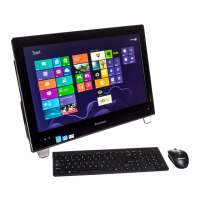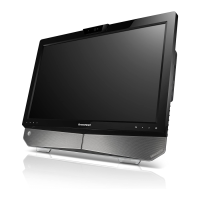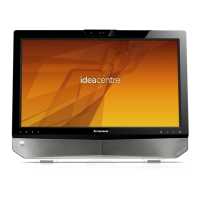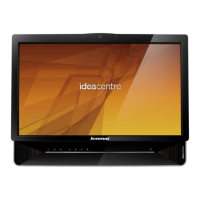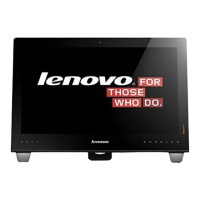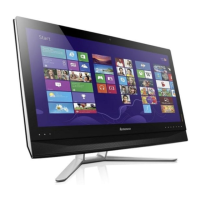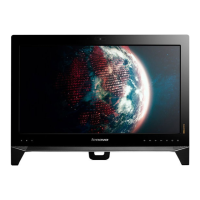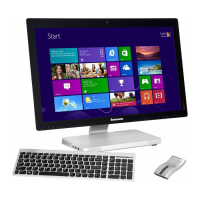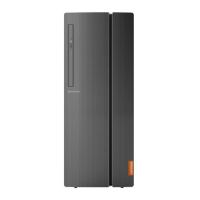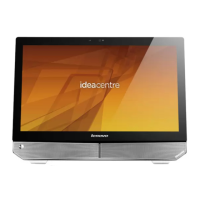
Do you have a question about the Lenovo IdeaCentre B520 and is the answer not in the manual?
| Tcase | 72.6 °C |
|---|---|
| Bus type | DMI |
| Stepping | D2 |
| Processor code | SR00B |
| Processor cache | 8 MB |
| Processor cores | 4 |
| Processor model | i7-2600 |
| System bus rate | 5 GT/s |
| 64-bit computing | Yes |
| Processor family | Intel® Core™ i7 |
| Processor series | Intel Core i7-2600 Desktop Series |
| Processor socket | LGA 1155 (Socket H2) |
| Processor threads | 8 |
| Processor codename | Sandy Bridge |
| Processor frequency | 3.4 GHz |
| Processor cache type | Smart Cache |
| Processor lithography | 32 nm |
| Processor manufacturer | Intel |
| Processor front side bus | - MHz |
| PCI Express slots version | 2.0 |
| Processor boost frequency | 3.8 GHz |
| Processor operating modes | 64-bit |
| ECC supported by processor | No |
| Thermal Design Power (TDP) | 95 W |
| CPU multiplier (bus/core ratio) | 34 |
| Maximum number of PCI Express lanes | 16 |
| Memory types supported by processor | DDR3-SDRAM |
| Memory channels supported by processor | Dual |
| Memory clock speeds supported by processor | 1066, 1333 MHz |
| Memory bandwidth supported by processor (max) | 21 GB/s |
| Maximum internal memory supported by processor | 32 GB |
| Internal memory | 8 GB |
| Memory slots type | SO-DIMM |
| Memory clock speed | 1333 MHz |
| Maximum internal memory | 16 GB |
| HDD speed | 7200 RPM |
| HDD interface | SATA |
| Storage media | HDD |
| Optical drive type | Blu-Ray ROM |
| Total storage capacity | 2000 GB |
| Compatible memory cards | Memory Stick (MS), MMC, MS PRO, SD, SDHC, SDXC |
| Number of storage drives installed | 1 |
| Power supply | 250 W |
| Networking features | Gigabit Ethernet |
| Graphics card family | Intel, NVIDIA |
| Storage drive interface | Serial ATA |
| Compliance industry standards | IEEE 802.3, IEEE 802.3u, IEEE 802.3ab |
| Display diagonal | 23 \ |
| Touch technology | Multi-touch |
| Display brightness | 300 cd/m² |
| Native aspect ratio | 16:9 |
| On-board graphics card ID | 0x102 |
| Discrete graphics card model | NVIDIA® GeForce® GT 555M |
| On-board graphics card model | Intel® HD Graphics 2000 |
| Discrete graphics card memory | 1024 GB |
| On-board graphics card family | Intel® HD Graphics |
| On-board graphics card base frequency | 850 MHz |
| On-board graphics card dynamic frequency (max) | 1350 MHz |
| Number of displays supported (on-board graphics) | 2 |
| Total megapixels | 0.3 MP |
| Audio system | SRS Premium Sound |
| RMS rated power | 15 W |
| Wi-Fi standards | 802.11b, 802.11g, Wi-Fi 4 (802.11n) |
| Ethernet LAN data rates | 10, 100, 1000 Mbit/s |
| USB 2.0 ports quantity | USB 2.0 ports have a data transmission speed of 480 Mbps, and are backwards compatible with USB 1.1 ports. You can connect all kinds of peripheral devices to them. |
| VGA (D-Sub) ports quantity | 0 |
| Product color | Black, Silver |
| Operating system installed | Windows 7 Home Premium |
| Sustainability certificates | RoHS, ENERGY STAR |
| Processor ARK ID | 52213 |
| Processor package size | 37.5 x 37.5 mm |
| Supported instruction sets | AVX |
| Intel Identity Protection Technology version | 1.00 |
| Depth (with stand) | 76.5 mm |
|---|---|
| Width (with stand) | 567.8 mm |
| Height (with stand) | 426.7 mm |
| Weight (with stand) | 10080 g |
Details the front-facing components of the computer and their functions.
Illustrates and lists components visible from the left and right sides of the computer.
Identifies and describes the various ports and connectors on the rear of the computer.
Explains how to adjust the computer stand for optimal viewing and stability.
Guides users on how to connect different peripherals and power to the computer.
Provides essential guidance on operating the computer, including power button usage.
Explains how to use and troubleshoot wireless keyboards and mice, including indicator lights.
Details the procedure for calibrating the touch screen for accurate input.
Explains various touch gestures like single click, right click, drag, zoom, and rotation.
Provides important precautions and care instructions for using the touch screen.
Describes how to use OneKey Recovery to restore the computer to a previous state or factory defaults.
Explains how to reinstall drivers and applications using the rescue system.
Covers configuring network settings and managing passwords for the Lenovo Rescue System.
Guides on backing up the system partition to an image file for future restoration.
Explains how to reboot into the recovery environment to restore the system.
Details the process of creating bootable recovery discs from the current system.
Explains how the system automatically adjusts display brightness based on ambient light.
Describes the system that monitors user distance from the display and alerts when too close.
Addresses issues like blank screens, no image, and setting display properties.
Provides solutions for issues related to sound from integrated speakers or headphones.
Offers guidance on resolving problems with running or uninstalling software programs.
Covers issues with the optical drive not reading CDs/DVDs and hard disk capacity discrepancies.
Highlights specific points relevant to troubleshooting Windows, like serial numbers and TV tuner usage.
Provides instructions on cleaning computer components and general care.
Explains how to connect wireless keyboard/mouse and troubleshoot pairing issues.
Details solutions for common problems like unpaired devices, unresponsiveness, or mouse function issues.
